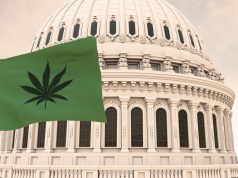
It’s not your grandfather’s pot,” I keep hearing. Every time I attend a forum or turn on the TV or the Internet, there’s somebody saying that today’s marijuana is fearfully strong and therefore much more dangerous than it used to be. “Studies reveal that marijuana potency has almost tripled over the past 20 years,” it says right on www. WhiteHouse.gov, citing studies that suggest that today’s marijuana has much more THC, the cannabinoid that gives users the “high” they seek and that prohibitionists seem to dread most. High Times magazine’s annual rundown of the world’s most potent cannabis this year were all certified and lab tested at more than 23 percent THC.
So is it more potent? Probably so. The cannabis people smoked back in the 1970s that came from Mexico and Columbia was strong enough — why would so many millions of people risk using it illegally if it wasn’t at least somewhat potent? But it’s not hard to understand why commercial strains today, grown under more favorable conditions and hybridized specifically to create higher THC levels, would be considered stronger.
The potency-is-dangerous meme really got rolling in the early 2000s. After The New York Times published articles warning of alarming increases in THC levels in 1980, 1986, and 1994, the government used them as part of the scare tactics that have been a trademark of the prohibitionist movement. This followed on the heels of the governmentinduced paraquat scare in the late 1970s. Paraquat, a well-known pesticide, was applied to Mexican cannabis fields, sponsored, of course, by the U.S. govern ment. After applying it, the government told citizens that the paraquat made the marijuana dangerous and unsafe to smoke.
It was a lie, of course, intended to scare Americans using pot. A 1995 study found that “no lung or other injury in cannabis users has ever been attributed to paraquat contamination,” and an EPA manual says much the same thing. “Toxic effects caused by this mechanism have been either very rare or nonexistent.” So much for the paraquat scare.
The potency issue gained even more traction in 2004, after a Reuters story boldly proclaimed: “Pot is no longer the gentle weed of the 1960s and may pose a greater threat than cocaine or even heroin because so many more people use it.” It went on to say officials at the National Institutes of Health and at the White House are hoping to shift some of the focus in research and enforcement from “hard” drugs such as cocaine and heroin to cannabis.
This news story, though it includes not one smidgen of evidence that stronger strains are more danger-ous than lesser ones, is still cited today to bolster arguments that higher THC levels are extremely danger- ous.
“I would predict that stronger pot makes the brain less likely to respond to endogenous cannabinoids,” Dr. Nora Volkow, then and now the director of the National Institute on Drug Abuse, said in an interview for the Reuters piece that year.
“While the research so far is inconclusive,” the story went on, “Volkow believes that cannabinoids affect the developing brain and that stronger pot, combined with earlier use, could make children and teens anxious, unmotivated or perhaps even psychotic.”
Let’s see. The “proof ” is based on Volkow’s “belief ” in how cannabinoids affect the brain, and the story admits the research is “inconclusive.” That’s the kind of “proof ” I always look for when planning a scare campaign.
So is cannabis more dangerous because it’s higher in THC? That’s the trickiest part of the argument. If you believe, for instance, as does Volkow, that all cannabis use is “abuse,” and that the effects of THC are all negative, then you would probably “predict,” as she does, that higher potency would create greater abuse.
Stronger strains of cannabis have always existed. Though much of the cannabis I smoked in the 1970s was probably mostly of Mexican origin, we could splurge (as in spend $40) for an ounce of “Colombian,” “sinsemilla” or some exotic strain of “Michoacán” Mexican that was obviously more “potent” than the basic $15-an-ounce weed. And there was always hashish, which was generally more potent than leaf cannabis back then. So the idea that “your grandfather’s pot” was just a bunch of hippies smoking hemp who didn’t know the difference doesn’t wash.
Warnings include claims that growing numbers of teens are in treatment for cannabis abuse. Though there probably are more teens in therapy for marijuana use, they generally have little or no choice in the matter. Most were arrested and given the choice of jail or treatment. This creates a situation where the government forces teens to go into treatment and then boasts of those higher numbers as proof that cannabis is strong and addictive.
Just another scare tactic from the same people who gave you paraquat pot and Reefer Madness.
Respond: [email protected]














